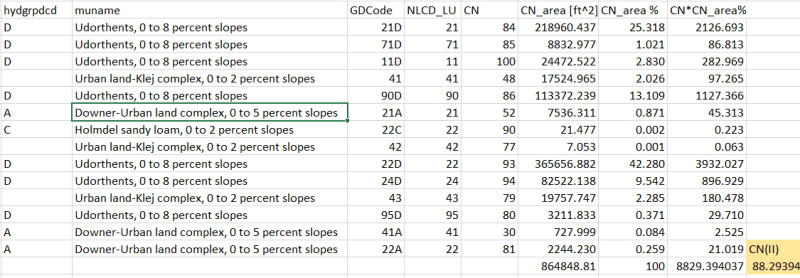mendacem
Civil/Environmental
- Sep 4, 2024
- 7
Hello everyone,
This might seem like a basic question, but I'm having trouble figuring out what's wrong with my setup.
I need to create a simple runoff model, so I set up one subbasin and input rainfall data into HydroCAD. The basin area is approximately 0.35 square miles, with a Curve Number (CN) of 88.29 and a time of concentration of 48 minutes, which I calculated by hand using Tc
= ((0.0136*L^0.8/S^0.5*(1000/CN-9))^0.7/60 - the SCS equation.
I'm new to this software; I usually work on hydraulic modeling, but now I need to handle the hydrology as well. I've done the hand calculations, and for a 24-hour storm with the catchment data mentioned above, I calculated the 100-year peak flow to be around 130 cfs. I also checked with StreamStats (which I know isn't a formal reference and can't be used in modeling, but I wanted to cross-check), and the 100-year peak flow is around 120 cfs. These values align pretty well.
The project is in New Jersey, so I used the SCS Type III 24-hour distribution. My client insists on using software capable of calculating this type of runoff. Since it seemed straightforward, I borrowed a HydroCAD license and also tested it with SSA, which I already had. To my surprise, when I set up the basic model (assuming that area, CN, and rainfall depth are the most important parameters affecting the results), the peak flow came out to be around 800 cfs. This seems vastly overestimated for an area of this size.
Both software packages gave me approximately the same results, which suggests they're calculating something differently then I do. However, after going through the manuals, FAQs, and explanations on the differences in results, I still can't understand where the problem lies.
I'd appreciate any insights or advice on what I might be doing wrong. I'm not attaching the model because there's not much to see—it's just a simple subbasin with area, CN, rainfall data, and the SCS Type III 24-hour distribution set up.
Thanks in advance.

